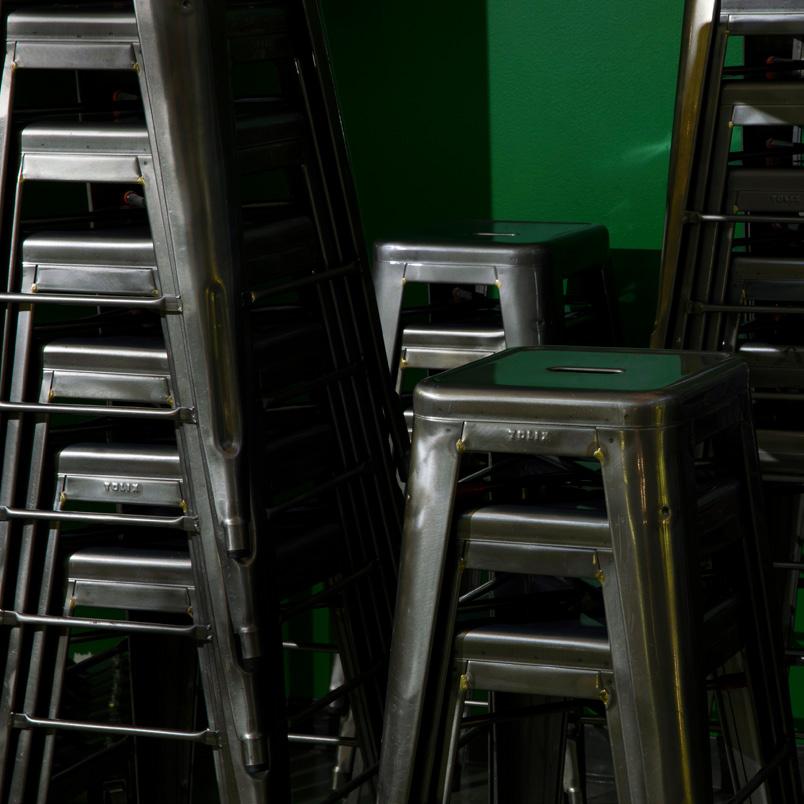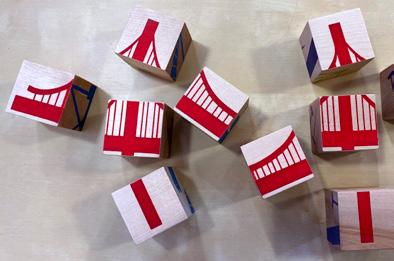
6 minute read
Designing Bridges Milan Drake
Designing Bridges
by Milan Drake
Designing Bridges

Designing Bridges is a series of questions posed to d.school instructors and students that range from the lighthearted to the metacognitive. From “What is your experience sheltering in place?” to “How might we make the awakening in this moment last beyond this moment?”
Designing Bridges was born out of the efforts to build and sustain authentic communities within and outside of the d.school as well as the exposed realities of two global, public health crises–covid–19 and racism. This goal of Designing Bridges is to document how curriculum, pedagogy, and emphasis on designing a sense of community confronts societal structures of old and builds bridges toward establishing new norms and spaces.

Both the questions asked and the answers given reflect an honest perception of the action, beyond words, that it requires to draw awareness to social determinants that exist in our society and our academic institutions. Designing Bridges represents the capturing of who we are as a d.school, how we support each other and our students, and most importantly, how we design to be leaders in resolve. We made a deliberate effort to check in on how instructors and students were holding up while sheltering in place. We took it back to the old school–how humans used to communicate back in the early 90’s: the phone, and removed the need to stare at a screen. The response was epic.
1We Were Overwhelmed & Overloaded
The feelings overwhelmed and overloaded were commonly shared with me during four phases of check-ins:
Phase 1:
Phase 2:
Phase 3:
Phase 4:
At the very beginning of the shelter in place (sip) The days and weeks following the sip In preparation for the spring quarter, and lastly The days and weeks following the start of the spring quarter.
It was common to hear that instructors pushed through all these phases with the students’ well-being in mind.
2Boundaries Were Dissolved

There were once clear boundaries between work and home, family and business. The lines that protected the sacred spaces of homes, families, and personal time went from crisp to blurred to obliterated. The classroom embodied all space and time.
3Emotions Weren’t Anticipated
The social emotional ups and downs during the sip created a “saw-toothed reality” for instructors. None of us could have anticipated what sip would be like. What did end up happening was over time each instructor’s sawtoothed experiences were no longer surprising or shocking...it became expected. With that, emotional connectedness, motivation, and creativity slid up and down the teeth on a saw several times throughout each day, each week, or even every class.
4Class Drops Were Hard To Take
It was disappointing to have students drop or withdraw from d.school courses. Some took a leave of absence from Stanford and others focused on other courses. Naturally, some instructors shouldered taking the student decisions to drop, personally. There was an obvious hope that the planning, collaborations, the guest lecturers, and all that goes into designing a class would come to fruition with and for the students. Having students feel they need to remove themselves from your class, your presence, your space of care, is a lot to take in.
5We Never Stopped Getting Our Bearings
The onset of the pandemic required a much–needed external and internal grounding, reflection, and assessment. Instructors stated they appreciated the space and time to just get their bearings and figure out how to transition to the virtual platform. Another common theme connected to needing a moment to get grounded was the appreciation of the Teaching + Learning Team and the leadership displayed in this process. The messaging was clear from T&L,
“we are here whenever you need us.” 6 We Were All Different & Together
We learned a lot about ourselves, how much space our homes truly have, and the strength of our wifi or the lack thereof. Every teaching team felt the impact of covid-19, sip, and the virtual teaching transition. Home situations varied. Some members were single and living alone, others were singleparents now shouldering the role of “overnight educators” with multiple children. What remained a prevalent occurrence was that every team, and I do mean every team, came up with ways to support each other and give people space to adjust, care for family members, be a parent, and support each other in and out of class.
7Phones Felt Good
“Can we just call them? Just call to say….hello?”
The simplicity worked. The phone calls were a pleasant relief and break from the long hours staring at computer screens.
8We Gave Extra Support to Students
The T&L Team built a digital Student Handbook, and instructors responded to the virtual classroom setting with resounding love and support for students. Support came in the form extended office hours, frequent post-class Zoom time, uniquely designed in-class breakout sessions, pre and post check-ins, and more. What I noticed more than anything was the thoughtfulness and long duration that instructors made themselves available for the sake of every student’s well being.
9Solitude Came In (Heavy) Doses
For anyone who has ever spent more than 30 minutes at the d.school, it is a place that you just seem to want more. It’s not just the building, it’s the people. Instructors shared with me the rigors of isolation. Again, that looked differently for each person. For some, it brought newfound freedom and time for hobbies or catch-up with family and friends. For others, the days tallied just how long it had been since physically seeing another human, hugging another person, or being able to visit public places.
10 We Tried For Human Connection
Instructors commonly expressed the efforts they made to capture and replace human connection in the virtual classroom. Some felt they were able to do so. Some felt they missed the mark but could not stop reaching for it. Some discovered new types of human connection.

11 There Was Power in Listening
covid-19 made a valiant effort to ravage our campus, our d.school community, our city, our state, our nation, our families, our health, and more. However, covid-19 did not expect to be combated by the listening ears and hearts of every d.school instructor. Instructors found ways to ensure whatever each student was wrestling with was heard and not ignored. Though this was appreciated and welcomed by students, it took a lot of work to coordinate making sure students were heard and responded to. Every instructor’s effort was met with reciprocity and appreciation from the students they served.
12 We Did Some Incredible Design Work
Lastly, but possibly one of the more popular commonalities amongst instructors I spoke with was the feeling of doubt in providing students with a high quality design learning experience. Some thought the online platform constrained their design work. Others pointed to the original design of the class and the need to rebuild it entirely as getting in the way of learning. Some highlighted not being in the same place as their students, or missing the hands-on quality of their teaching. What I saw was designers, designing. Yes, some were designing in unfamiliar territory. But the result was more beautiful than many instructors give themselves credit for. They survived while serving with love and being connected, in spite of being apart. They made history and they definitely “designed their design work.”










